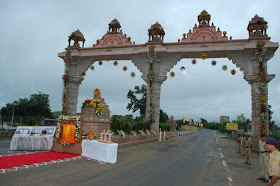 yamunotri temple wallpaper
yamunotri temple wallpaper Yamunotri temple photo
Yamunotri temple photo Yamunotri temple images
Yamunotri temple imagesYamunotri temple:
Yamunotri temple is the early point of the holy River Yamuna. It is the western mainly shrine in the Garhwal range of the Himalayas, balanced on the borders of Bandar-Poonch Parvat. The major attraction at Yamunotri is the temple devoted to Goddess Yamuna and the holy thermal Sulphur springs, about 7 km away at Jankichatti. The real foundation of the river is a frozen lake (Sapt Rishi Kund) and glacier called the Champasar Glacier, located on the Kalind Mountain, about a kilometer from the Sulphur springs. While the way to the glacier is arduous and approximately distant for common pilgrims, they offer ‘Puja’ in the temple itself.
Yamunotri temple Location
Best Time to Visit
The Yamunotri temple opens on the positive day of the Akshya Tritiya, which typically falls throughout the last week of April or first week of May. The temple and the town close down due to very heavy snowfall on the blessed day of Diwali (in mid October or first week of November). The area around Yamunotri remains cool even throughout summers. The winters are snow-bound and temperatures fall below 0º C. One is advised to obtain light or serious woolens depending on the time of visit.
Myths & Legends
According to a myth, Sage Asit Muni had his hermitage here. During his life he bathed daily in the waters of both Ganga and Yamuna. slowly, unable to go to Gangotri throughout his old age, a stream of Ganga appeared opposite Yamunotri for him. Another legend says that Yamuna’s supposed frivolousness was due to her mother’s inability to look at Yamuna’s father, Lord Surya, in the eye due to his great radiance. It is moreover said that if one bathes in the waters of Yamuna, the person ceases to die a painful death since Yamuna is the sister of Yama, the lord of death.
How To Reach
Yamunotri temple can be reached on foot or on a pony from Janaki Chatti. It takes about 2 1/2 hours to arrive at Yamunotri on a pony. Throughout bad weather, buses usually don't reach Janaki Chatti and one has to get down at a place called Sayana Chatti. From Sayana Chatti, usual Jeep services to Janaki Chatti are available a reasonable prices.















































